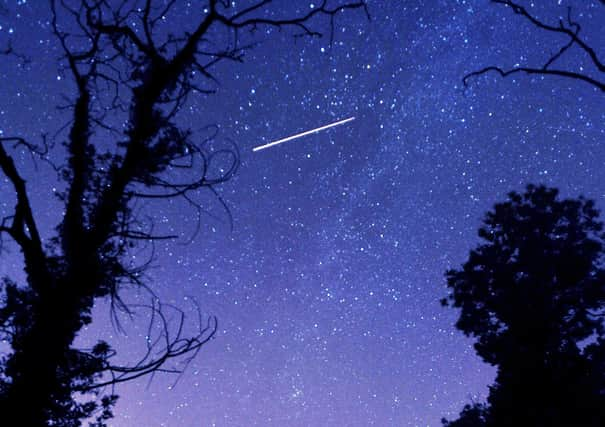Meteor shower to light up Peterborough skies


The Lyrids Meteor Shower will see dozens of ‘shooting stars’ lighting up the night sky this week, with the peak expected to be on Tuesday night (April 21).
The stunning sight will be visible with the naked eye over several nights.
Advertisement
Hide AdAdvertisement
Hide AdWhile the shower will be a spectacular sight, the meteors causing it are only the size of a grain of sand.
Phil Adams, from the Peterborough Astronomical Society said: “A meteor shower is caused by material left behind by a comet. When we travel through that material, matter about the size of a grain of sand burns up in the atmosphere. We think the comet the caused the Lyrids visited us several thousands of years ago, and we may see it again, but not in our lifetimes.
“You will be able to see the meteor shower for a couple of days before Tuesday, and a couple of days after, but Tuesday will be the peak, between about 10pm and midnight. We think there will be about 10 to 20 meteors per hour.
The shower originates from Vega - one of the brightest stars in the night sky in the Lyra constellation. The aerial show will be visible across the sky, with the meteors coming from a north east direction.
Advertisement
Hide AdAdvertisement
Hide AdPhil said: “This is probably the biggest and best meteor show every year.
“To watch it, if possible find the darkest point in your garden, wrap up in warm clothing, with a flask of coffee, and if possible, lie on a sun lounger, so you don’t get a crick in your neck. If you point your feet towards the north east, the meteors will be coming towards you.
“It looks like Tuesday could be a relatively clear night as well at the moment.
Astronomers had hoped a comet would be visible later this month, but Phil said it had started to break up.
Advertisement
Hide AdAdvertisement
Hide AdHe said; “The Atlas Comet was discovered by the Atlas Telescopes - which is looking for Near Earth Objects - on December 28. The closest it will actually come is about 117 million kilometres away - about as far as the Sun is from Earth. The original expectation is that it woul d be reasonably bright, but the latest information is that it is breaking up.”
Phil urged residents to use the lockdown period to learn more about the night sky. He said residents with a tripod and a DSLR camera could create star trail pictures by setting the camera up overnight and using long exposures to see the effect of the earth’s rotation.
He also suggested looking at websites including Nasa, The Science Museum, zooniverse and BBC’s The Sky At Night - as well as simply looking at the detail you can see on the Moon with the naked eye.